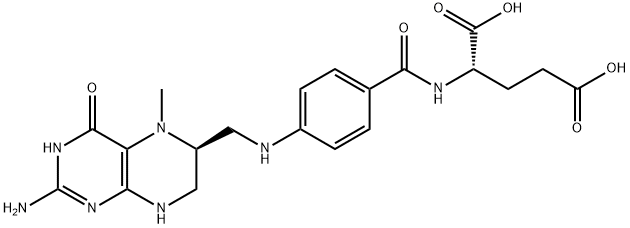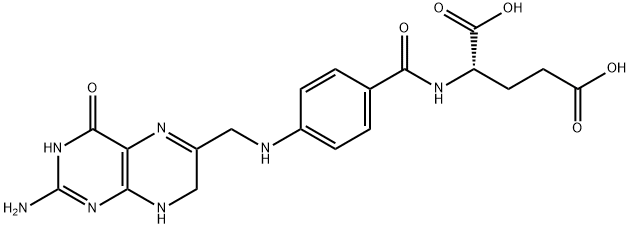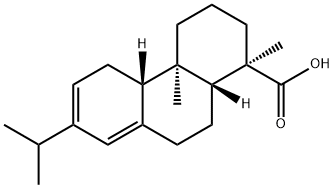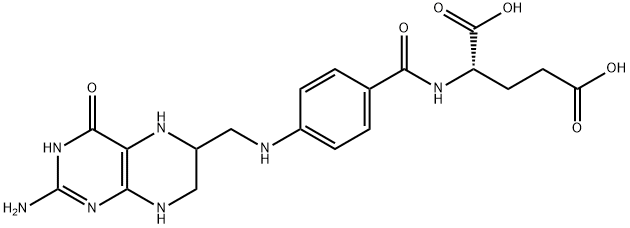Levomefolic Acid
- CAS NO.:31690-09-2
- Empirical Formula: C20H25N7O6
- Molecular Weight: 459.46
- MDL number: MFCD00870135
- EINECS: 203-919-7
- SAFETY DATA SHEET (SDS)
- Update Date: 2024-11-20 11:41:24

What is Levomefolic Acid?
Absorption
Absorbed in the proximal small intestines via the active proton-coupled folate transporter (PCFT) that transports both oxidized and reduced folic acids. Passive diffusion also occurs at the proximal and distal portions of the small intestines . A single oral dose of 906nmol of levomefolic acid in healthy females resulted in the mean peak plasma concentration of 39.4nmol/L .
Toxicity
Overdose of levomefolic acid is unlikely to cause clinically significant adverse events.
The Uses of Levomefolic Acid
As a natural, active form of folic acid, Levomefolic Acid can be used at the cellular level for DNA reproduction, the cysteine cycle and the regulation of homocysteine among other functions. It is a coenzymated form of folic acid and a more bioavailable alternative in dietary supple
The Uses of Levomefolic Acid
A natural, active form of folic acid used at the cellular level for DNA reproduction, the cysteine cycle and the regulation of homocysteine among other functions. It is a coenzymated form of folic acid. It has been proposed for treatment of cardiovascular disease.
Background
Levomefolic acid (INN) is the metabolite of folic acid (Vitamin B9) and it is a predominant active form of folate found in foods and in the blood circulation, accounting for 98% of folates in human plasma . It is transported across the membranes including the blood-brain barrier into various tissues where it plays an essential role in the DNA synthesis, cysteine cycle and regulation of homocysteine, where it methylates homocysteine and forms methionine and tetrahydrofolate (THF). Levomefolate is approved as a food additive and is designated a GRAS (generally regarded as safe) compound . It is available commercially as a crystalline form of the calcium salt (Metafolin(R)), which has the stability required for use as a supplement . Supplementation of levomefolic acid is desired over folic acid due to reduced potential for masking vitamin B12 deficiency symptoms.
Indications
For the treatment and prevention of folate deficiency and for use as an antidote against folic acid antagonists. Contained in oral contraceptives to reduce the risk of neural tube defects arising from folic acid deficiency for pregnant women who conceived during use or shortly after the discontinuation of the product. Being studied for use as a treatment for cardiovascular diseases and adjunct therapy for patients undergoing antidepressant pharmacotherapy .
Definition
ChEBI: 5-methyltetrahydrofolic acid is a tetrahydrofolic acid that is 5,6,7,8-tetrahydrofolic acid substituted by a methyl group at position 5. It has a role as a human metabolite. It is functionally related to a 5,6,7,8-tetrahydrofolic acid. It is a conjugate acid of a 5-methyltetrahydrofolate(2-).
Pharmacokinetics
Levomefolic acid is an active metabolite of folic acid and a methyl group donor in one-carbon metabolism reactions. It regulates important cellular functions such as DNA biosynthesis, gene expression regulation, amino acid synthesis and metabolism, and myelin synthesis and repair. As a only form of folate that can cross the blood-brain barrier, it acts as a cofactor in the production of monoamine neurotransmitters such as dopamine, serotonin and norepinephrine . Levomefolic acid is also involved in red blood cell formation .
Metabolism
Levomefolic acid is further converted into tetrahydrofolate (THF) via the vitamin B12-dependent enzyme methionine synthase before effective polyglutamylation by folylpolyglutamate synthetase (FPG). Polyglumate forms of folic acids are more effective substrates for associated enzymes in folate-dependent reactions.
Properties of Levomefolic Acid
| Melting point: | 215-218oC |
| Density | 1.62 |
| storage temp. | Sealed in dry,Room Temperature |
| solubility | Aqueous Base (Slightly, Heated, Sonicated), DMSO (Slightly) |
| form | Solid |
| pka | 3.51±0.10(Predicted) |
| color | Off-White to Light Green |
Safety information for Levomefolic Acid
| Signal word | Warning |
| Pictogram(s) |
 Exclamation Mark Irritant GHS07 |
| GHS Hazard Statements |
H302:Acute toxicity,oral H315:Skin corrosion/irritation H319:Serious eye damage/eye irritation H335:Specific target organ toxicity, single exposure;Respiratory tract irritation |
| Precautionary Statement Codes |
P261:Avoid breathing dust/fume/gas/mist/vapours/spray. P280:Wear protective gloves/protective clothing/eye protection/face protection. P301+P312:IF SWALLOWED: call a POISON CENTER or doctor/physician IF you feel unwell. P302+P352:IF ON SKIN: wash with plenty of soap and water. P305+P351+P338:IF IN EYES: Rinse cautiously with water for several minutes. Remove contact lenses, if present and easy to do. Continuerinsing. |
Computed Descriptors for Levomefolic Acid
Abamectin manufacturer
Nuray Chemicals Pvt Ltd
West Bengal Chemical Industries Ltd.
Allastir Private Limited
New Products
4-AMINO-TETRAHYDRO-PYRAN-4-CARBOXYLIC ACID HCL 4-(Dimethylamino)tetrahydro-2H-pyran-4-carbonitrile 4-Aminotetrahydropyran-4-carbonitrile Hydrochloride (R)-3-Aminobutanenitrile Hydrochloride 3-((Dimethylamino)methyl)-5-methylhexan-2-one oxalate 1,4-Dioxa-8-azaspiro[4.5]decane 5-Bromo-2-nitropyridine Nimesulide BP Aceclofenac IP/BP/EP Diclofenac Sodium IP/BP/EP/USP Mefenamic Acid IP/BP/EP/USP Ornidazole IP Diclofenac Potassium THOMAIND PAPER PH 2.0 TO 4.5 1 BOX BUFFER CAPSULE PH 9.2 - 10 CAP SODIUM CHLORIDE 0.1N CVS ALLOXAN MONOHYDRATE 98% PLATINUM 0.5% ON 3 MM ALUMINA PELLETS (TYPE 73) LITHIUM AAS SOLUTION 2-Bromo-1-(bromomethyl)-3-chloro-5-nitrobenzene 2-Bromo-3-nitroaniline N-(3-Hydroxypropyl)-N-methylacetamide 3-Bromo-6-chloropyridazine 4-ethyl-3-nitrobenzoic acidRelated products of tetrahydrofuran






You may like
-
 Levomefolic acid 98%View Details
Levomefolic acid 98%View Details -
 31690-09-2 98%View Details
31690-09-2 98%View Details
31690-09-2 -
 31690-09-2 Levomefolic acid 98%View Details
31690-09-2 Levomefolic acid 98%View Details
31690-09-2 -
 Levomefolic Acid CAS 31690-09-2View Details
Levomefolic Acid CAS 31690-09-2View Details
31690-09-2 -
 1823368-42-8 98%View Details
1823368-42-8 98%View Details
1823368-42-8 -
 2-(3-(tert-butyl)phenoxy)-2-methylpropanoic acid 1307449-08-6 98%View Details
2-(3-(tert-butyl)phenoxy)-2-methylpropanoic acid 1307449-08-6 98%View Details
1307449-08-6 -
 Ethyl 3-(furan-2-yl)-3-hydroxypropanoate 25408-95-1 98%View Details
Ethyl 3-(furan-2-yl)-3-hydroxypropanoate 25408-95-1 98%View Details
25408-95-1 -
 Lithium ClavulanateView Details
Lithium ClavulanateView Details
61177-44-4